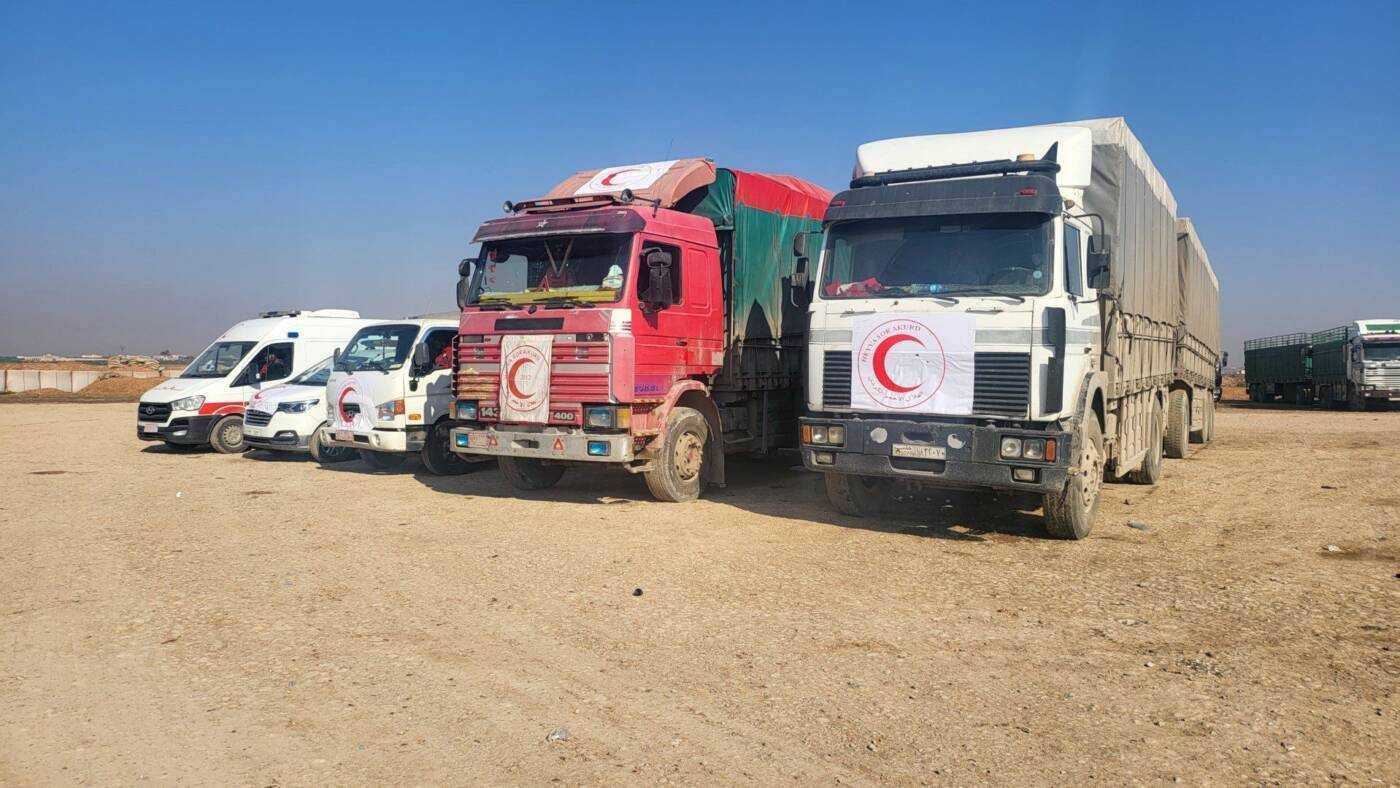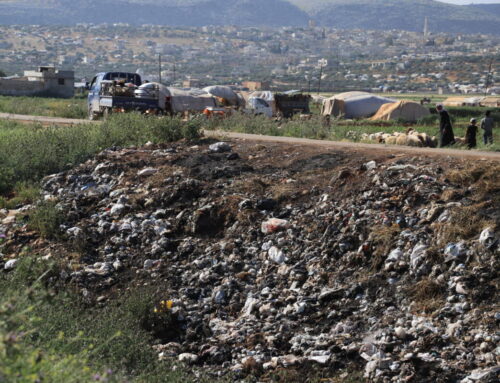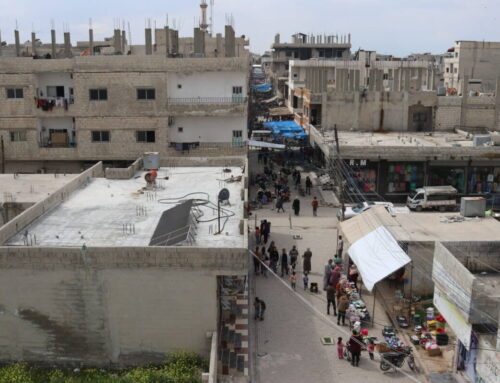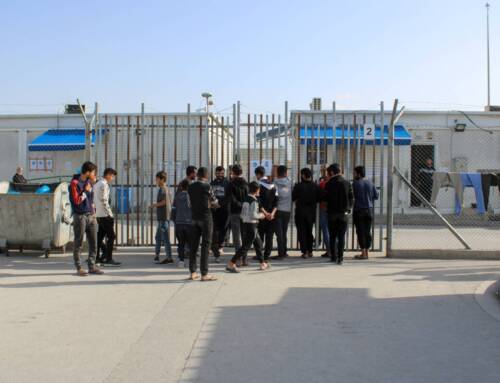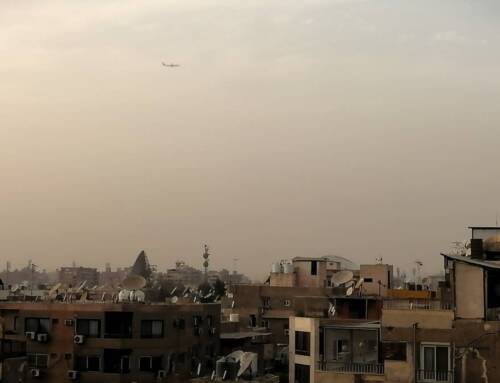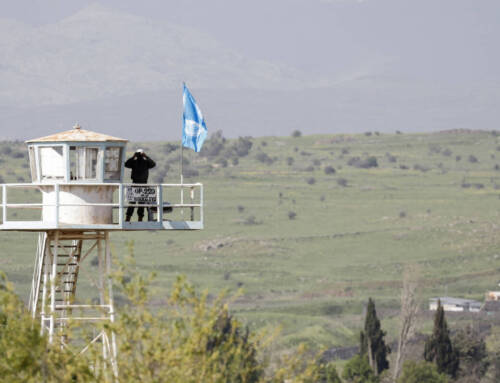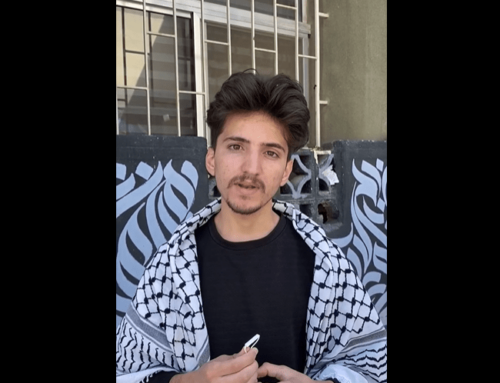Stalled by regime and opposition, cross-line aid to earthquake victims trickles in from northeastern Syria
Cross-line aid convoys coming from northeastern Syria to support earthquake survivors in opposition and government-controlled areas have been stalled for days by both the Assad regime and Turkish-backed factions, in an apparent attempt to politicize and control aid flows in their respective areas.
13 February 2023
QAMISHLI – Ciwan Heme has spent the past three nights sleeping in a car. Along with 14 other aid workers, he has been stranded since Saturday at al-Tayha, a crossing point in the eastern Aleppo countryside that connects areas controlled by the Autonomous Administration of North and East Syria (AANES)—the de-facto entity ruling northeastern Syria—with government-controlled territories.
“We arrived here at nine in the morning on Saturday and we’ve been here for three days, alone. The crossing is in the middle of the desert, the connection is very bad. Once in a while we send a car to Manbij to bring us food,” Heme told Syria Direct by phone on Monday afternoon. “We are just waiting, waiting for permission to cross.”
Five days after the devastating earthquakes that hit northern Syria and Turkey on February 6, Heme, a Syrian doctor with the Kurdish Red Crescent, jumped into an ambulance, eager to treat survivors pulled out of the rubble in Aleppo.
Heme and his colleagues arrived in al-Tayha in a convoy of two ambulances and three trucks loaded with bedding, tents and medical supplies intended for survivors in government-controlled areas of Aleppo province. But hours went by, then days, and the ambulances remained stuck at the crossing. Regime forces at the checkpoint demanded that half the convoy’s supplies be handed over to them directly in order for it to be allowed to pass.
Alongside the Kurdish Red Crescent convoy, dozens of trucks carrying fuel and humanitarian supplies have been stranded in northeastern Syria for several days, unable to cross conflict lines and bring relief to earthquake survivors in both government- and opposition-controlled parts of Syria. In a country splintered by 12 years of war, the politicization of aid and hostility between parties to the conflict continue to hinder solidarity between Syrians, even in desperate times.
Cross-line relief
It has been more than a week since two earthquakes—7.7 and 7.6 on the Richter scale, followed by nearly 2,000 aftershocks—devastated southeastern Turkey and northern Syria. But aid is still trickling into Syria too slowly to meet skyrocketing needs.
More than 36,000 people are counted dead as of February 13, including at least 3,587 inside Syria. The death toll is likely to rise over the coming weeks, particularly in opposition-controlled Syria, where a lack of machinery and complete absence of international aid in the first days of the tragedy hindered search and rescue efforts.
Northeastern Syria was spared the worst effects of the earthquake, with six deaths and 57 injuries reported in AANES territory. Within hours of the disaster, the de facto administration offered to send aid to other parts of Syria, and for its territory to serve as a transit route for aid to the worst-hit parts of the country.
In the following days, three humanitarian convoys attempted to cross the al-Tayha and Um Jaloud crossings, which connect AANES-controlled areas to government-controlled Aleppo and opposition-controlled Jarabulus, respectively—but all remained stranded there for days. The first convoy, organized by the Kurdish Red Crescent, was blocked in al-Tayha by the Syrian government, which requested half its supplies be given to the Syrian Arab Red Crescent (SARC), which works under the control of Damascus.
“The government of Syria stressed that all future aid provided by NGOs from northeastern Syria to government-controlled areas would only be allowed to enter if half of the provided assistance is handed over to the government,” a high-level international humanitarian source, who requested anonymity because his organization cannot give statements to the media, told Syria Direct.
A second convoy, organized by the AANES and composed of 100 fuel trucks and two trucks of food and medical supplies donated by various civil society organizations and NGOs, was also blocked at the al-Tayha crossing on February 10 by the Syrian government.
“The Syrian regime requested 80 percent of the aid, leaving us with only 20 percent to distribute to those affected by the crisis,” Yasser Suleiman, deputy co-chair of the AANES’ General Council, told Syria Direct. “The AANES rejected this condition, because we consider it a form of extortion against the people of northeastern Syria.”
A third cross-line convoy, also formed by the AANES, consists of 30 fuel tanks and two trucks carrying food and medical supplies for opposition-held areas of northern Aleppo. It reached Manbij on February 8, two days after the earthquake, but remains blocked at the Um Jaloud crossing by the Turkish-backed opposition’s Syrian Interim Government (SIG), which administers opposition-held areas of northern Aleppo province.
Stalling aid
The humanitarian source called the Syrian government’s attempt to seize the Kurdish Red Crescent convoy, the first NGO-led shipment from AANES areas, “unlawful and arbitrary obstruction of humanitarian assistance and an attempt to divert aid intended for affected communities.”
The move aligns with a long history of attempts by the Syrian government to both monopolize the distribution of aid and divert it away from its opponents as a form of collective punishment. In the case of the Kurdish Red Crescent convoy currently stuck at al-Tayha, the Syrian government is preventing aid from reaching communities in Aleppo province seen as supportive of the AANES.
According to humanitarian sources and to the Rojava Information Centre, a local media organization, the Kurdish Red Crescent convoy is intended for earthquake survivors in Sheikh Maqsoud and Ashrafiyah, two neighborhoods of Aleppo that are located within regime-held areas but are controlled by the People’s Protection Units (YPG), a Kurdish military group that also forms the backbone of the Syrian Democratic Forces (SDF), the AANES’ military branch.
Both neighborhoods were besieged by the Syrian army for several months at the end of last year amidst mounting tensions between the AANES and the Syrian government. The convoy also targets survivors in Shahbaa, another YPG-held enclave north of Aleppo city that hosts many internally displaced Kurds from opposition-held Afrin. In the wake of last week’s earthquakes, the special political status of these three enclaves sparked concerns that they would not be served by the government-led humanitarian response.
AANES officials say the aid they have sent is not aimed exclusively at the three areas the Kurdish Red Crescent hopes to reach. “This aid is for all affected areas and does not target a specific group,” Suleiman said. “In fact, many people here volunteered and asked to contribute to the rescue operations, but we weren’t able to send them due to the security conditions and the lack of approval from [other parties].”
Meanwhile, the Turkish-backed SIG also initially rejected the cross-line assistance sent from northeastern Syria. “SDF militias are investing in Syrian people’s pain to achieve political gains and portray themselves in a good light,” Abdurrahman Mustafa, the head of the SIG, said on February 9.
“[The SDF] has replaced the booby traps it used to send us with fuel cars, so that their areas will be approved as an entry point for the liberated areas,” he said, referring to areas of northern Aleppo province held by Turkish-backed opposition factions.
But on February 12, after days of negotiations, the SIG issued an official statement welcoming the delivery of aid from “the people and clans in the eastern regions of Syria,” hinting that cross-line convoys to the northwest would only be allowed through if they did not come as official aid from the AANES.
The SIG “is ready to facilitate the flow of humanitarian aid provided by tribal organizations and by civilians east of the Euphrates River and is ready to secure its arrival to the affected areas,” Mustafa announced the same day.
Aid trickles in
On Monday, two convoys—one organized by an international medical organization and the other by civil society organizations in northeastern Syria—finally crossed through Um Jaloud to reach SIG-controlled areas.
The entry of the convoys from AANES areas into opposition-held Aleppo on Monday kindled hopes that other shipments of aid sent by civil society organizations and NGOs will be let through in the days and weeks to come.
“Dozens of convoys are being prepared by the people of Deir e-Zor, Raqqa and al-Jazira [Hasakah]for northwestern Syria,” Suleiman said. “The most important thing is that it reaches those who need it.”
If successful, these convoys could also represent an alternative entry point into opposition-controlled parts of Syria, where aid has until now been almost entirely channeled through the cross-border hub in southern Turkey—a region where NGO offices, roads and logistical services all suffered a heavy blow.
But in al-Tayha, trucks heading for Damascus-controlled areas have yet to cross, and aid workers are still waiting. “Hope is not what drives us to stay here,” Heme said. “It’s the suffering and need of people. As long as our help is needed, we can stay here at the border, even if it takes another month.”

